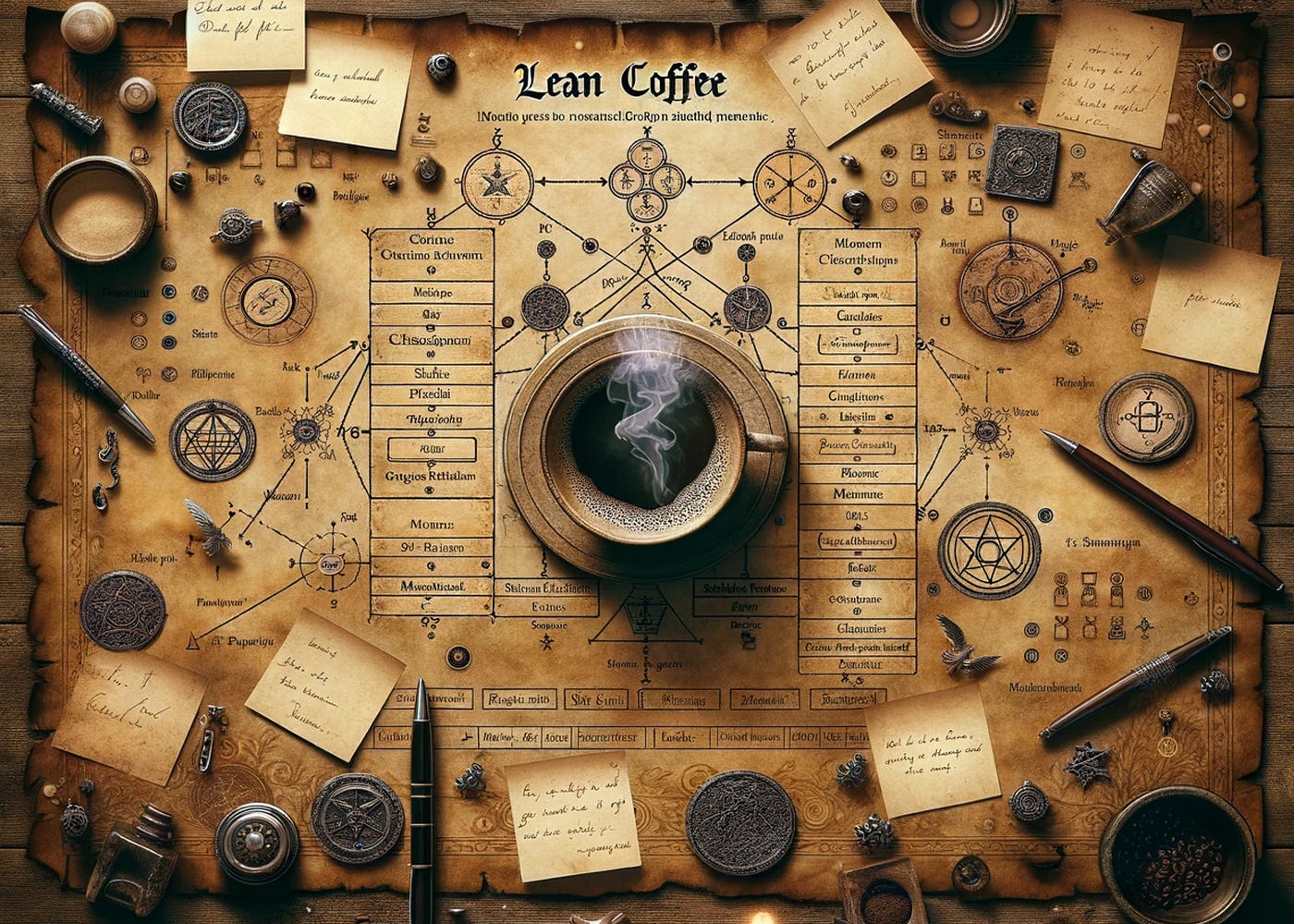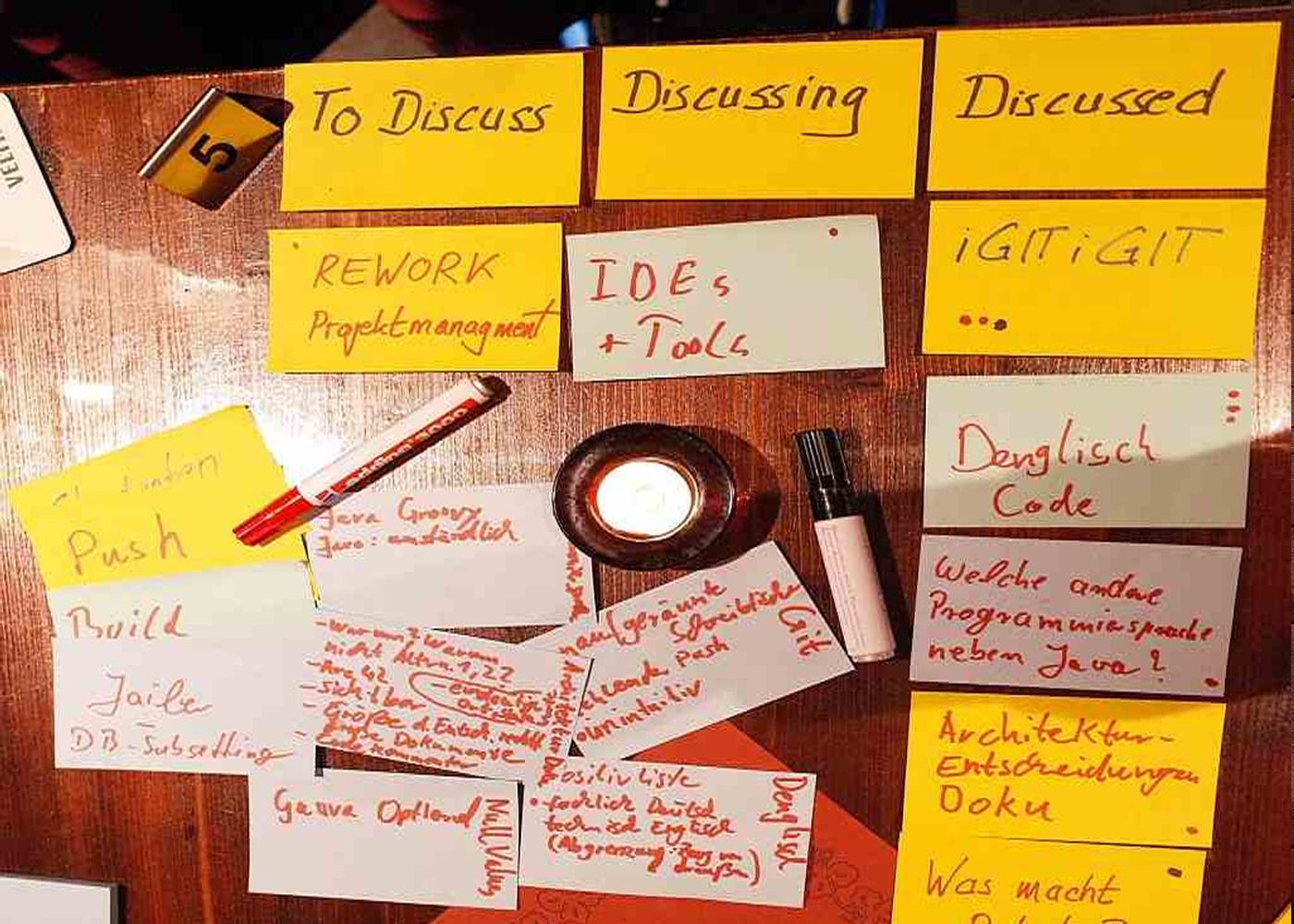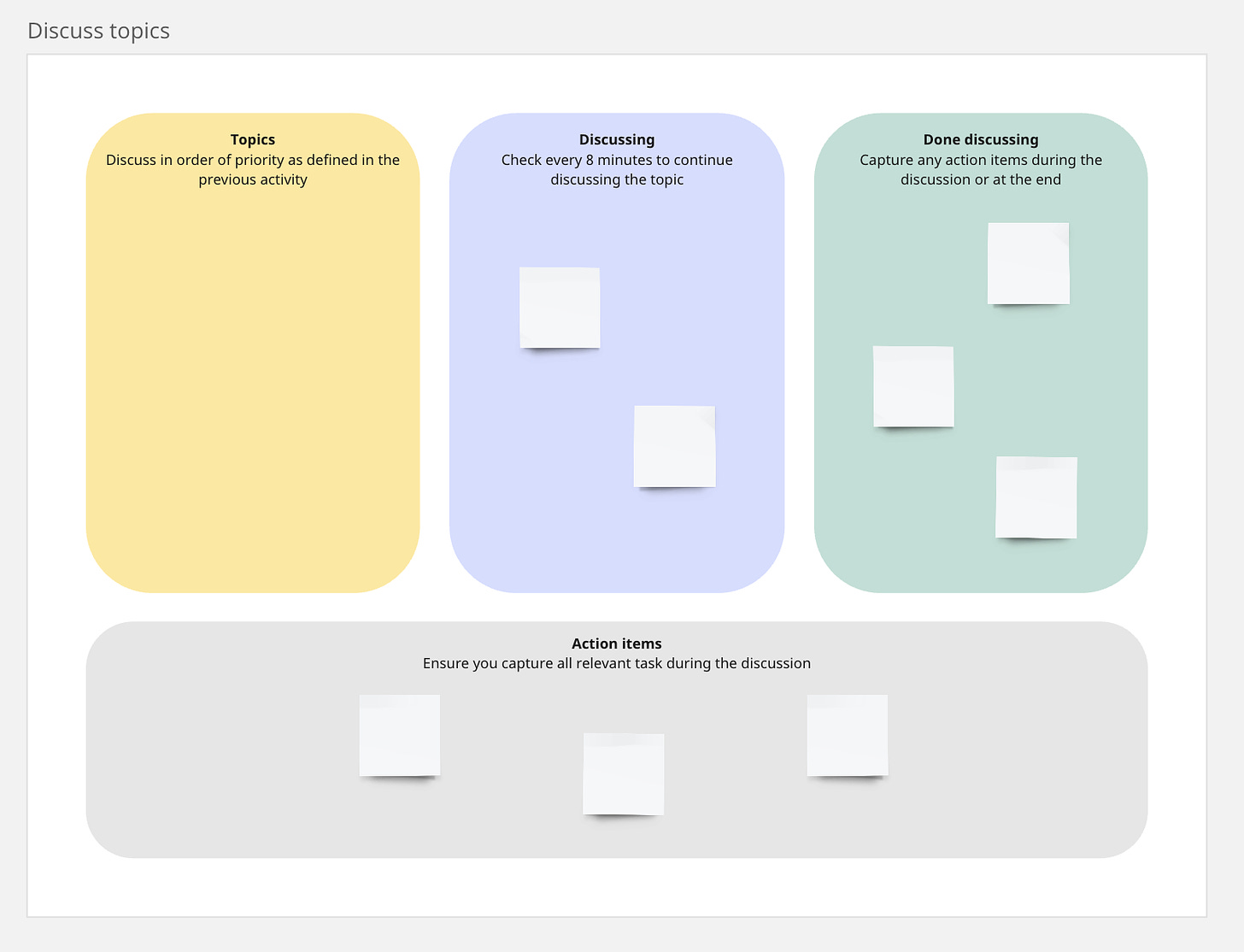Revolutionising Meetings with Lean Coffee
Discover the power of Lean Coffee for engaging, efficient, and democratic discussions in your studio.
The Problem with Traditional Meetings
In today's fast-paced game development environment, the traditional meeting structure is increasingly seen as inefficient. Participants often leave feeling that their time could have been better spent. Formal meetings tend to be dominated by a few voices, leaving little room for inclusive dialogue or creative brainstorming. This lack of engagement diminishes the quality of ideas generated and affects team morale.
Producers, in their pivotal role of shaping team dynamics, stand to revolutionise the efficiency and engagement of meetings by implementing the Lean Coffee approach. This adaptable framework breathes life into discussions, breaking away from the monotony of traditional meetings.
What is Lean Coffee?
Lean Coffee represents a paradigm shift in how we conduct meetings. It turns the traditional top-down approach on its head by starting with no predefined agenda. In this format, the agenda is democratically constructed by all participants at the outset of the meeting. This method fosters an environment of collaboration and engagement, ensuring that discussions are relevant and resonate with everyone involved.
The Lean Coffee Process
Brainstorming and Democracy in Action
The process begins with each participant suggesting topics or questions they are interested in discussing. This could range from project-specific issues to broader strategic questions. Everyone is encouraged to contribute, ensuring a diverse range of topics. This initial stage is crucial as it sets the tone for an inclusive and open discussion.
Voting and Prioritisation
Once the topics are on the table, participants vote on them. This voting process is critical to address the group's most pressing concerns first. It democratises the meeting and places the power in the hands of the participants rather than a predetermined agenda set by a few.
Time-Boxing for Focused Discussions
Each topic is discussed for a predetermined time, usually 5 to 10 minutes. This time-boxing is essential for keeping the meeting concise and on track. It helps maintain focus and ensures that discussions are direct and to the point.
Adapting Lean Coffee for Various Settings
Lean Coffee's adaptability is one of its most vital features. It is ideal for team check-ins, notorious for being dreaded and stale. In brainstorming sessions, it can help in generating a wide array of ideas and solutions. During community meet-ups, it can facilitate discussions on various topics, from community issues to shared hobbies. Learning sessions can effectively share knowledge, with topics ranging from industry best practices to new technological advancements.
The Role of Facilitation
In Lean Coffee meetings, the facilitator's role shifts from leading to guiding. They are instrumental in ensuring that the meeting unfolds smoothly, with every participant having an equal opportunity to voice their thoughts and that the conversation remains focused and productive. A skilled facilitator expertly navigates through the topics, ensuring each receives adequate attention and contributes to the meeting's objectives. An integral part of the facilitator's responsibilities includes setting up the board or digital platform for the meeting and ensuring that action items are correctly recorded and processed. It is beneficial to rotate the facilitator role among team members for regular meetings. This practice distributes the responsibility and allows everyone to develop their facilitation skills and gain a deeper understanding of the Lean Coffee process, further enriching the team's collaborative experience.
Virtual Lean Coffee
Lean Coffee's effectiveness in virtual settings is greatly enhanced by digital tools like Miro or Figma, which have become indispensable for remote teams. These platforms offer functionalities tailored explicitly for online collaboration, such as brainstorming features that allow simultaneous idea contributions and voting mechanisms for a democratic selection of discussion topics. Additionally, they provide efficient ways to track discussions, ensuring that all points are addressed and action items are captured. This level of organisation and accessibility is crucial in remote settings to maintain engagement and focus.
Interestingly, these digital tools are not confined to virtual meetings alone. Participants often use laptops or tablets to interact with the same online platforms in person. This integration serves to streamline the Lean Coffee process while also offering a degree of anonymity. Such anonymity can be particularly beneficial during the brainstorming and voting phases, encouraging more open and honest input from team members. It allows diverse ideas to be shared freely without the immediate pressure of judgment or bias.
Thus, in a remote or face-to-face environment, augmented by these digital tools, Lean Coffee ensures an inclusive and productive meeting experience. It allows every participant to have an equal voice, making meetings not just more democratic but also more dynamic and engaging. The use of technology in this context is not just about convenience; it significantly enhances the quality of interactions and ensures that every contribution is heard and valued.
Lean Coffee in Practice
Implementing Lean Coffee in a team or studio often necessitates a significant shift in cultural norms and meeting practices. This innovative approach requires participants to remove the passive role typically assumed in conventional meetings and actively contribute to the agenda-setting process. Initially, this change can be challenging; team members might need encouragement and guidance to come prepared with meaningful topics and fully engage in the democratic process of voting and discussing these topics.
Leaders and facilitators need to foster an environment where every contribution is valued and where there's a collective responsibility for the meeting's outcome. As this culture of active participation and shared leadership takes root, teams generally discover a noticeable enhancement in their meetings.
The Lean Coffee format, once it becomes an integral part of the team's routine, leads to discussions that are not only more productive in terms of outcomes but also more engaging and satisfying for participants. This heightened level of engagement and enjoyment arises from the sense of empowerment and belonging that team members experience when they see their ideas and concerns being addressed.
Conclusion
Lean Coffee is not just a meeting format; it's a tool for cultural change within teams and organisations. It encourages open dialogue, ensures all voices are heard, and leads to more productive and satisfying meetings. By embracing Lean Coffee, you can bring about a significant positive change in how your team collaborates and communicates. Over time, Lean Coffee doesn't just change how meetings are conducted; it transforms the dynamics of team interaction, fostering a more collaborative and innovative studio environment.








